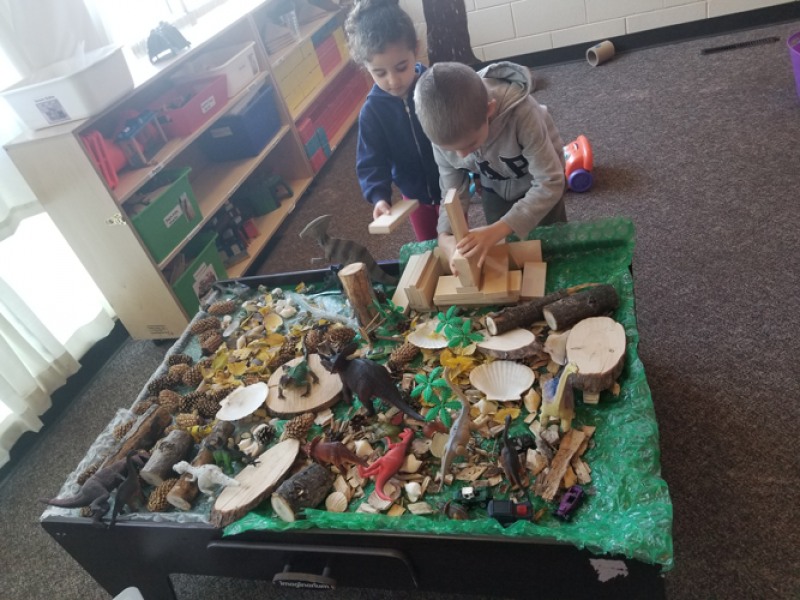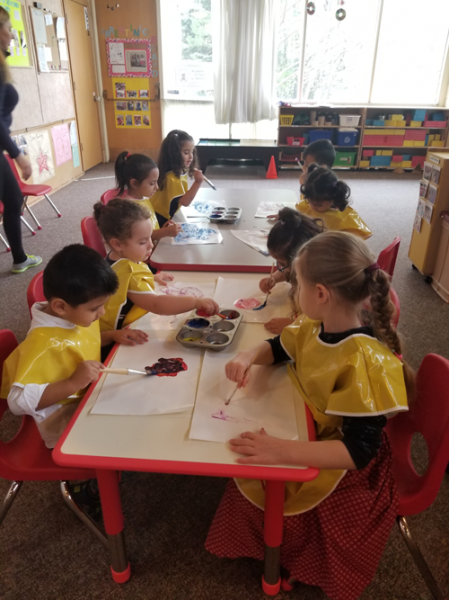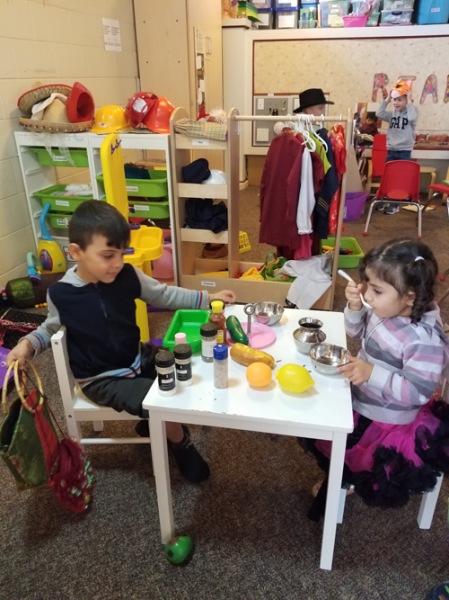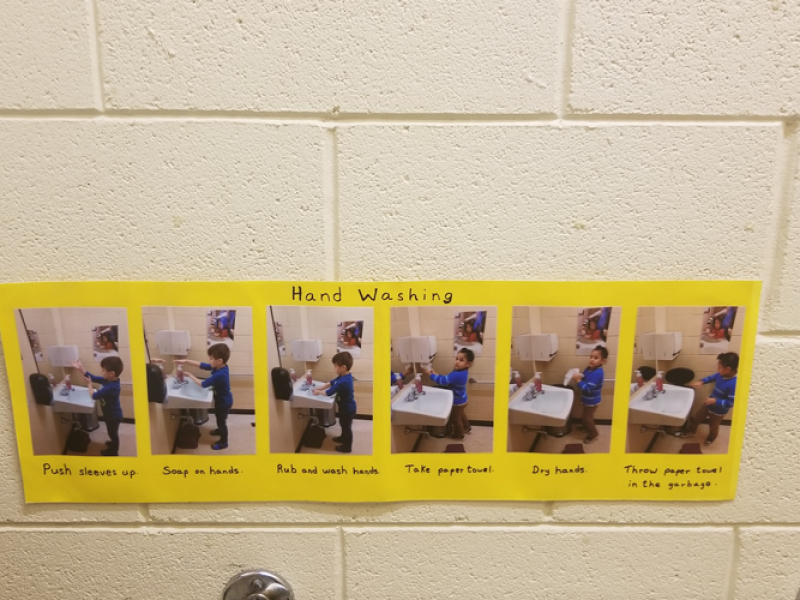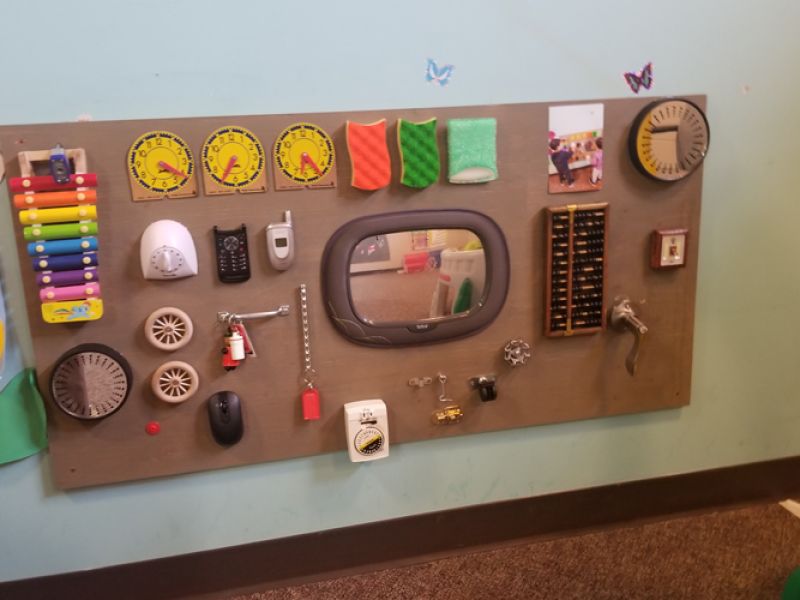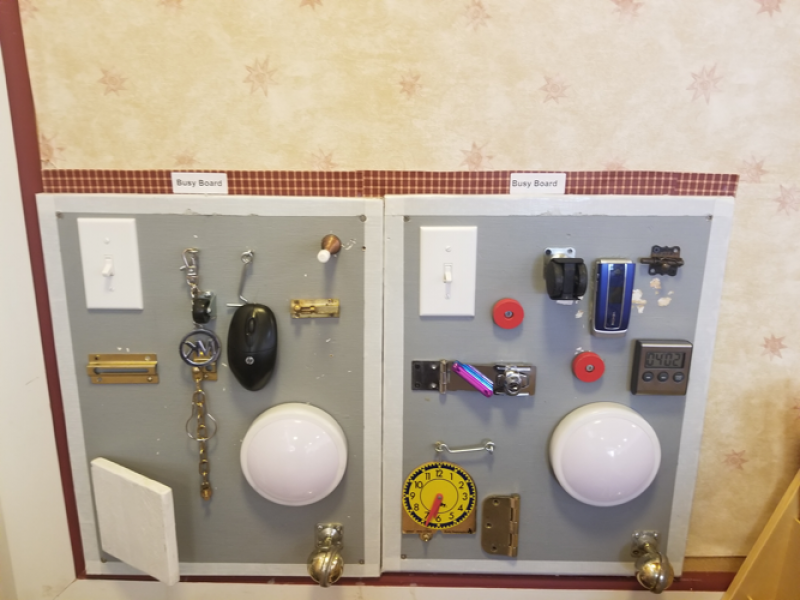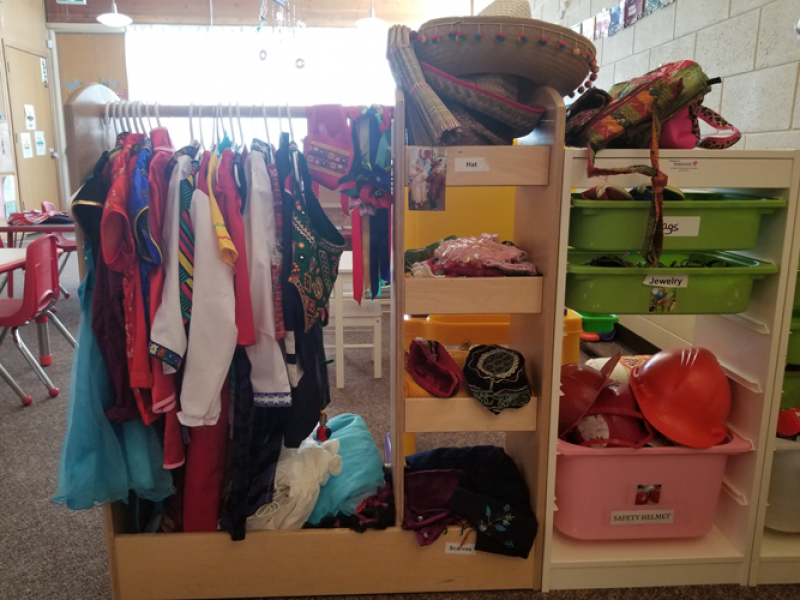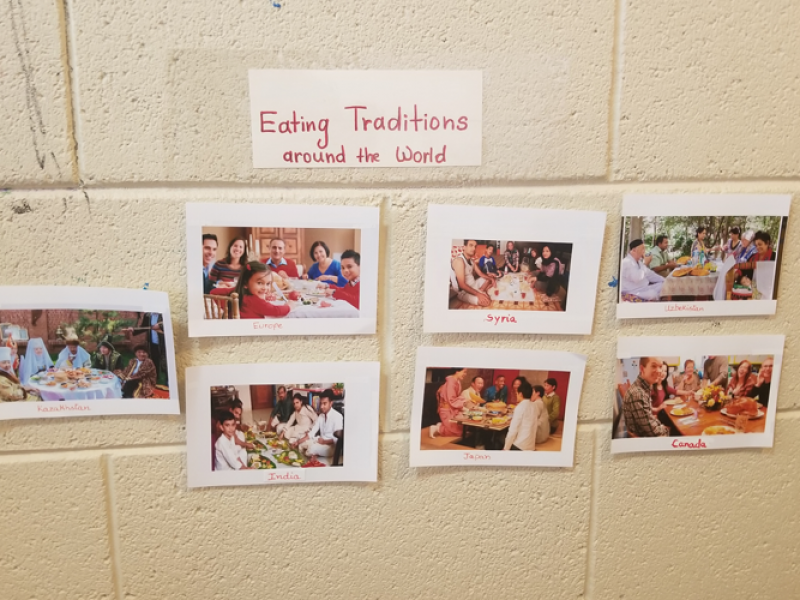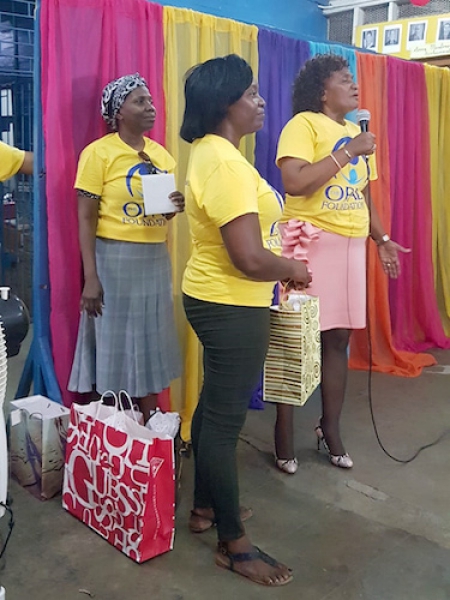Red River College’s CNC program in Steinbach, a rural area one hour outside of Winnipeg, serves a growing local immigrant population. Located in a Mennonite Church, increased enrolment keeps the site running at or near its capacity of 25 children, who range in age from 18 months to five years old. Not only is the program filling a need within the community, but the staff is showing strength in child-centred care and explorative play, according to their CMAS consultant, Jackie Cunningham.
CMAS spoke with the Childcare Supervisor, Nalini Ranganath, to explore five of their practices that really benefit the newcomer children.
 1. Use open-ended activities and loose parts to entice play
1. Use open-ended activities and loose parts to entice play
Nalini and her team are strong believers in creating open-ended activities and incorporating loose parts to entice play and exploration with different materials. Since many of the children who come to the program have little or no experience with actual toys, they don’t know how to engage with them.
To that end, the staff has created many busy boards with familiar elements. For example, they have converted their train table into a park and a zoo using natural materials they bring in from outside. This allows the children to connect with nature, seeing as the program has no outdoor play area. It creates a sense of peace for the children, who can recognize the items and get drawn into the play.
“The children come up with their own great ideas on how to interact with the activities, instead of having it set for them with toys they cannot relate to,” explains Nalini. “Some children come with no language skills, and this type of play allows them to express themselves. They use their imaginations and the play goes wild.”
2.  Give children time
Give children time
The team at Steinbach never hurries the children through a play experience. Rather, they give them time to fully explore an interest, even if it lasts for days. Allowing play to unfold naturally–instead of forcing the children to move to another activity–has a number of benefits.
“As an ECE. it allows us to really get to know their interests, seeing as we can observe them over time,” says Nalini. “Extended play is also a good opportunity to make friends and learn language from each other. They need the time to explore, socialize more, and talk to each other at their own pace.”
This practice encourages a calm environment. Nalini points out that If they don’t feel rushed, the children are more relaxed. This is especially important for newcomer children who may be experiencing separation anxiety, culture shock, or even trauma.
3. Foster independence…without frustration
The program excels at creating a balance between what at the children can do without help… and with help… to keep them challenged, but not frustrated. This is essential for newcomer children who may lack the language to express themselves, which can affect their sense of independence and confidence.
Nalini explains that they do this through a combination of observation, supervision, and modelling.
She uses the example of puzzles to explain how staff observe the children and offer activities related to their abilities. First, they put out puzzles with fewer, larger pieces and observe how the child is manipulating them. As they get a sense of skill level, they gradually introduce more challenging options. Staff always supervise activities and jump in if they see children really need help….before they have a chance to get discouraged.
Another strategy? Staff members will purposefully ask their colleagues for help with simple tasks. This models the behaviour that it is okay to ask for assistance—and also teaches words like ‘help’. Knowing how to get support when they need it reassures the children and keeps them from feeling defeated or losing confidence in themselves.
Modelling also comes into play through visual cues. When learning skills, such as hand washing, the program incorporates real pictures of the children going through the steps of the process. The children love seeing themselves performing these tasks and they can see exactly what they need to do–even if they cannot follow verbal instructions.
As a result, children are quick to gain independence in the Steinbach program.
“Parents who are new to the program see other children eating lunch or washing their hands without help and say ‘my kids can’t do that’. We encourage them to do it on their own, and within a few days…they are. The parents can’t believe it,” recounts Nalini.
4. Observe interests to support play and extend activities
 At Steinbach, meaningful, child-centred play experiences all start with observations.
At Steinbach, meaningful, child-centred play experiences all start with observations.
Every day, staff conduct observations and make notes in the log about each child’s strengths, interests, and what activities they engaged in for a longer period of time. Pictures are included for reference. At the end of the day, the team reflects on what else can be introduced to make play more enjoyable.
Nalini recalls one boy from Eritrea who did not speak much and had no interest in toys. Staff noticed he was more fascinated by cardboard than any of the toys. He would pile pieces together, rubbing his hand and repeating ‘fire’—as if he was warming himself over an open flame. The team saw his continued interest in repurposing cardboard boxes, so they brought in more. He used them to make a house. Staff then extended his play possibilities by bringing in blankets and tree bark, which he added to his structure. He loved using these familiar items to create scenarios that were within his realm of experience. This became his bridge to socialization, as other children gave input on and added to his house and the play experience. He got to stretch his imagination and creativity—and made friends in the process.
5. Celebrate cultural uniqueness to encourage connections
Settlement means more than adapting to the language and customs of a new country. Newcomer children bring a variety of experiences and traditions that need to be integrated and valued to ease the transition process. The Steinbach CNC team does an excellent job of celebrating cultures, so children can make connections to their own backgrounds, as well as those of the other families. Culture is woven into all areas of the program–from the signage and materials to the activities and music.
There are multilingual posters and labelling throughout the room. Even garbage bins are marked with the item name in English and a variety of languages. Staff can easily read out the words to simplify communication. This practice supports learning English and reinforces home language skills.
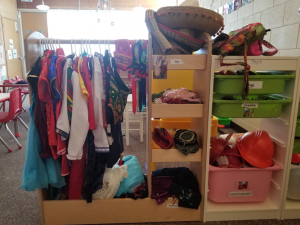 The team also highlights different cultural practices through posters. For example, many families eat by hand. The images reflect this custom, so–the children feel comfortable with whichever way they choose to eat. Sometimes, staff even put a blanket down to eat on the floor–a typical style of dining for many of the families in the program.
The team also highlights different cultural practices through posters. For example, many families eat by hand. The images reflect this custom, so–the children feel comfortable with whichever way they choose to eat. Sometimes, staff even put a blanket down to eat on the floor–a typical style of dining for many of the families in the program.
The program also has lots of items–including dress up clothes, hats, dishes, and dolls–from different countries. Many of these were donated by the families. The children love using them in dramatic play, and it encourages diversity, exploration, imagination, and learning.
“It is so interesting to see how the children use the materials differently in play. For example, they used a scarf I brought in as a table runner,” recalls Nalini.
In addition, the welcoming and inclusive program invites parents to read children’s books in their own languages and share their cultural festivals and celebrations. Parents are thrilled to participate. They are also grateful for the program’s practice of playing music from around the world.
As Nalini explains, “When they are at home the children tend to watch cartoons rather than listening to music, so having a way to connect to different aspects of their culture within the program is very meaningful to our families.”
A Steinbach resident for 13 years, Nalini recalls a time when most immigrants to the area were German and Russian. Now, the newcomers they serve hail from more than a dozen countries. As the CNC program has grown in diversity over the years, so has the staff’s commitment to build on their child-centred practices that encourage play and embrace different cultures.
“We have very few behavioural problems and children are excited to come each day. It has really helped them to settle into their new community,” says Nalini.


